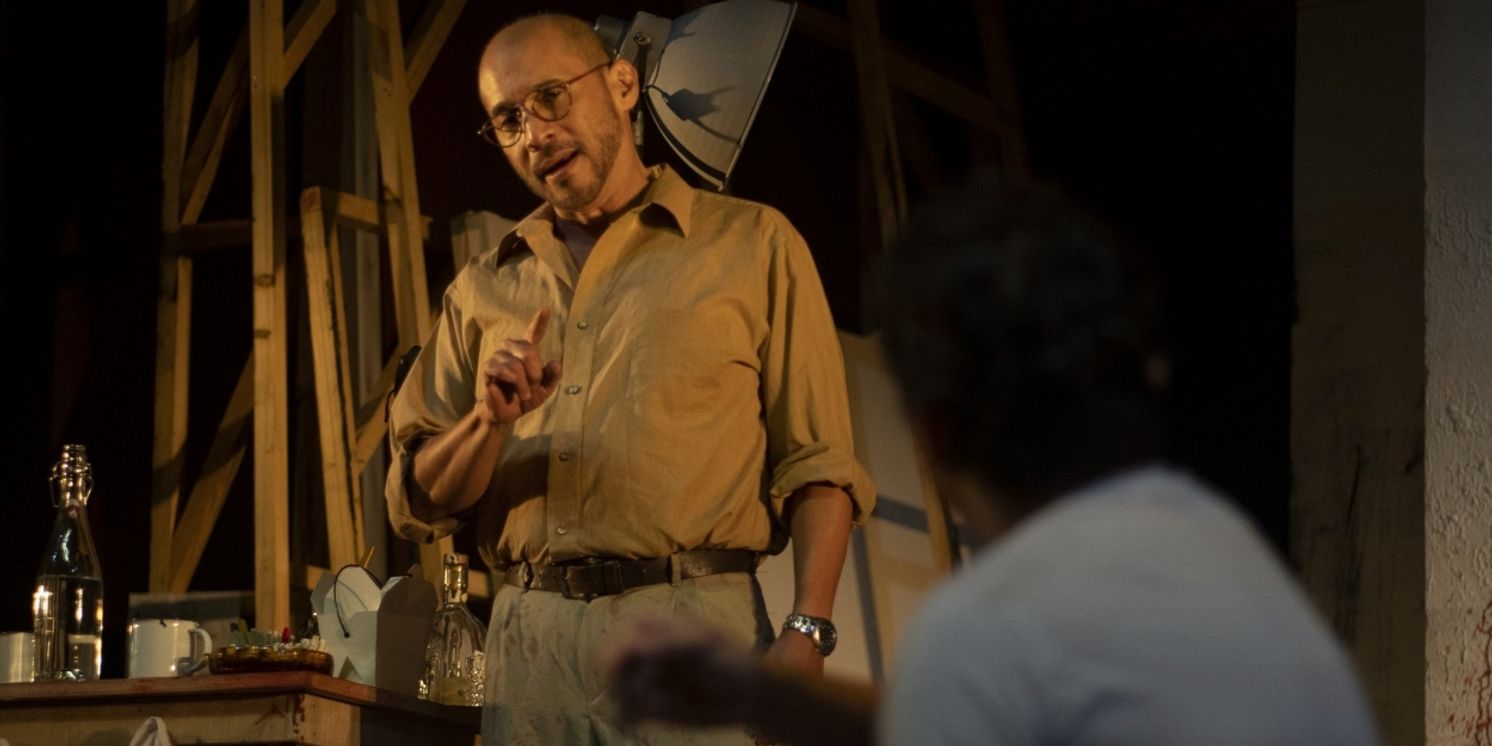Artistic Integrity or Profit?
John Logan’s ‘Red’ runs until this Sunday, June 18, 2023, at the PETA Theatre Center.

Manila, Philippines--A little over 10 years since Actor's Actors Inc.'s The Necessary Theatre premiered John Logan's Tony Award-winning play "Red" in Asia, the theater company brings back the two-hander on stage. Bart Guingona still plays the abstract expressionist Mark Rothko, while JC Santos plays his fictional studio assistant Ken, originally played by Joaquin Valdes.
This new production poses the question of integrity versus profit more intently than its predecessor, which this writer also saw. Should the artist live a life of the stereotype of a struggling artist, or should they embrace a profitable or more commercial creativity?
"There’s only one thing I fear in life, my friend, that one day the black will swallow the red,” Rothko said in the play, which encapsulates its crux.
Rothko is in his Manhattan studio in the late ‘50s, commissioned to paint the Seagram murals, the first of a series he applies dark hues, for the exclusive, newly-opened Four Seasons restaurant.
An alpha male, Rothko, gives orders to his assistant. The latter mixes the paints, makes the frames, and primes the canvases. That’s how Rothko envisions his employer-employee relationship with his new associate, who’s bound to work for him in the next two years.
Production Designer Mark Daniel Dalacat creates a playing space for the two actors that’s intimate yet ring-spaced, laying the ground for a 90-minute free-flowing and often clashing views about art appreciation, commodification, and legacy.
Gabo Tolentino and Satya Edilo's low-key lighting, which Rothko prefers to depict the “tragedy, ecstasy, and doom” in his paintings, complements well with Jose Buencamino's enigmatic, sometimes chilling sound design, which makes the storytelling gripped with pulsating, at times conflicting beats, reflecting Rothko's sense of self and his art.
 As the play progresses, in this writer’s reading, Rothko realizes Ken is a figment of his imagination. Logan's brilliance uses Ken to stir up Rothko's conscience as an artist. Ken, eventually questions Rothko's theories of art and his commission work for the upscale restaurant. Rothko abhors the rise of popular art and big businesses, which contradicts his ideology as an artist. How could he possibly agree to a hefty sum for something highly consumerism?
As the play progresses, in this writer’s reading, Rothko realizes Ken is a figment of his imagination. Logan's brilliance uses Ken to stir up Rothko's conscience as an artist. Ken, eventually questions Rothko's theories of art and his commission work for the upscale restaurant. Rothko abhors the rise of popular art and big businesses, which contradicts his ideology as an artist. How could he possibly agree to a hefty sum for something highly consumerism?
Rothko's lopsided conversations with Ken is a tug-of-war, revealing further what kind of artist the former was. He may be a narcissist, a snob, but his roots reflect Ken’s difficult childhood. This parallels that of Rothko, a Jew living in Russia during WWII before immigrating to the United States.
As Rothko and Ken fight about their differing views as artists, it becomes more apparent towards the play’s last 20 minutes that Rothko was dealing with his demons following his suicide in 1970.
Guingona allows Rothko’s character to envelop him further as an actor, like being possessed by Rothko’s ghost. While Santos effectively paints a vivid picture of how idealistic Rothko was in his younger years. Ken randomly flashes memories of the young Rothko, reminding the latter of his raison d être as an artist.
“Create something new,” Rothko once said to “his younger self.”
The play also succeeds in explaining how many artists couldn't reconcile fame with their "truths." It mirrors Friedrich Nietzsche's “The Birth of Tragedy” with that of Paul Jackson Pollock’s death. Nietzsche says this emptiness has resulted partly from a lack of mythology.
"The images of the myth have to be the unnoticed omnipresent demonic guardians, under whose care the young soul grows to maturity and whose signs help the man to interpret his life and struggles,” wrote Nietzsche.
--with additional words by Oliver Oliveros
Photo: Ivan Sarenas

Videos

